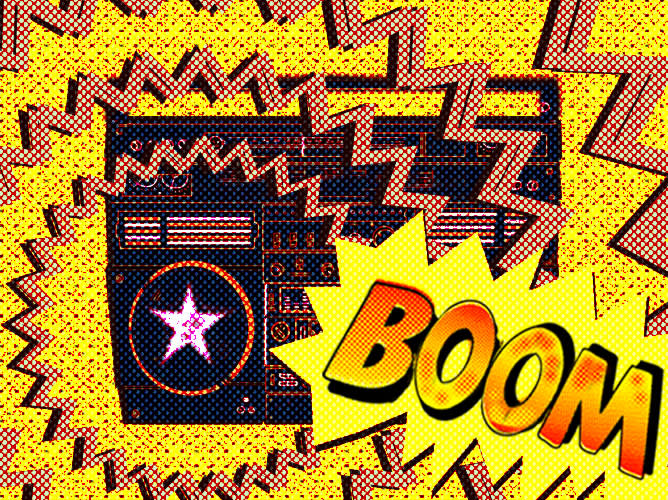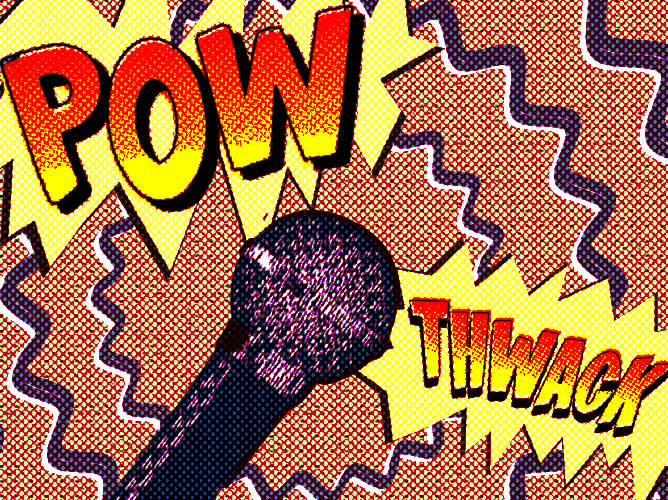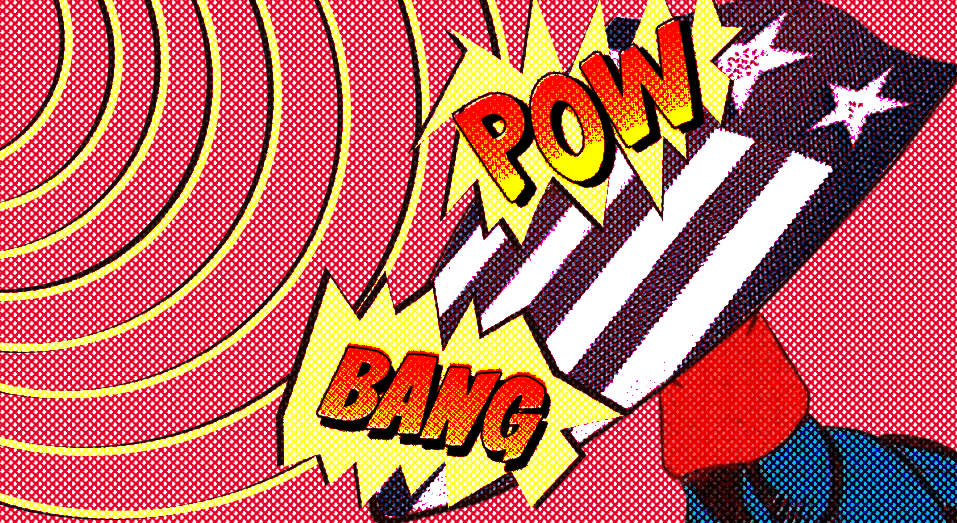Although trapped in a silent medium, a number of use sound to fight crime — or commit it. These sonic powers are as diverse as the characters who wield them. Some protagonists’ stories speak to complex social and political issues, though others just run around and scream at their foes. Here’s a look at these heroes and villains, and the amazing abilities they derive from sound.
: Bursting onto the scene in 1947, this trailblazing heroine originally relied on her fists to fight crime. But she finally got her own superpower in 1969, a hypersonic wail called the “Canary Cry.” (And yes, Sheldon Cooper clones, male canaries are actually the loud ones, but let’s hold that snitty thought.)
An electronics prodigy whose hearing was raised to ultrasensitive levels during experimental surgery, the Pied Piper then created sonic weaponry to battle the Flash. Thanks to some time-travel hocus-pocus, he later became an ally of the Flash. A pioneer of sound since 1959, the Piper is now part of a growing list of LGBT superhumans, and a possible spinoff star from the current TV series.
Hulk: One of the Green Goliath’s superpowers is the “,” in which he creates a sonic boom by clapping his hands together. The Hulk first pulled this move back in 1962, and since then characters like Superman have employed it whenever a writer can’t think of a better way to end a scene.
Daredevil: This blind hero can , as seen in the popular Netflix series. The accident that made Matt Murdock sightless radically heightened his other senses and gave him an additional “radar sense.” By judging the proximity of sounds around him, Daredevil can envision a 3-D image of his surroundings, which any of us could do next time we lose our keys.

: “The Ugly Duckling” fairy tale is the basis for this Wonder Woman foe. Or foes, actually — there are three of them. Or maybe four. (Hey, it’s comics, who’s counting?) The original was a failed ballerina transformed into a resplendent supervillain by Mars, god of war, and the Amazing Amazon’s sworn enemy. Mars gave her the power of the “Swan Song,” which is essentially the Canary Cry on steroids. One of the other Swans uses these sonic powers to boost her singing career, proving once again that supervillains are just frustrated pop stars.
: The leader of the genetically modified Inhumans produces devastating sonic waves simply by opening his mouth, a power first unleashed at birth. Tragically, Black Bolt was then isolated in a soundproof chamber until he could learn to keep his mouth shut. (Tragically for Black Bolt, we mean — not so much for the other Inhumans.)
: A charter member of the and the , Klaw developed a prosthetic device that converted sound waves into solid matter. But the weapon needed a rare metal called vibranium, which is found only in the African nation of Wakanda. Klaw’s brutal tactics would bring him to blows with Wakanda’s king, better known as the , the first black superhero in mainstream comics.
: Are comic book writers particularly sensitive to noise? It seems like a lot of sonically gifted characters started off as bad guys. Taking his name from , this shrieker first appeared as an X-Men villain but later became an X-Man himself. “Stick around long enough and every villain gets a shot at becoming a passable hero,” explains Jonathan Morris, author of .
: Another reformed villain, Banshee’s daughter calls herself Siryn, a name she either borrowed from Greek mythology to describe her sonic powers of seduction, or actually refashioned from an ’80s hair-metal band.
: Leave it to comic books to come up with a 1968-vintage supervillain in 1973. Angar was a radical activist (think ) whose political rants instilled sonically induced hallucinations in his victims (think ). “Mainstream comics never had much love for the hippie,” Morris observes.
: Created in 1976 for the Legion of Super-Heroes series, this sonic hero was part of an attempt to incorporate more black characters into DC’s roster. But many felt the character’s initial incarnation was poorly conceived and racially insensitive. Legion writer Paul Levitz also believed that sound-based characters were “intrinsically futile in a silent medium.” Of course, that never stopped anyone from trying.
A more successful attempt at integration was former , who was given a hypersonic weapon after battling the Angel of Death himself. Duncan now sports a sonic device that can open interdimensional portals. Most of us would settle for a half-decent signal on our cellphones. Your move, science.
: Comic books always seemed to be late to the party when it came to pop culture trends, which explains why Marvel introduced a disco-singing superhero a good six months after disco’s bubble burst. As first seen in Uncanny X-Men #130, Dazzler was able to convert sound to light, a showstopper she could use both in her roller-boogie diva act and in her crime-fighting mutant act.

This X-Men ingenue got herself one very weird power: She can teleport herself across galaxies. Her connection to sound? Well, Lila’s not only a superhero pop star, but thanks to that power, she’s also an interstellarsuperhero pop star. Beat that, Taylor Swift.
: In 1984, DC’s well-intentioned but ill-conceived series had second-stringers like Aquaman and Zatanna recruit new heroes like Paco Ramone (aka Vibe), who can create shockwaves — while breakdancing. Let’s just say if sonic characters seem futile in a silent medium, dance-based characters are doubly so in a silent and static medium. Morris notes that “superheroes like Vibe represented what writers of the time knew about hip-hop culture — which wasn’t much.”
: Former X-Men artist John Byrne created this screecher when he jumped ship to work for DC in 1986. This Superman nemesis stuck closer to the old myths than her Marvel counterpart, who really isn’t very Banshee-like at all.
: Originally a villain called “Screaming Mimi” (no, seriously), Songbird can tune her powers up and down the musical scale. Low C induces anxiety, D causes panic attacks, E dizziness, F nausea, G headaches, and so on. So talk to your doctor if you experience any of these side effects while fighting Songbird.
Finally, some characters use sound in a totally different way to tell stories. Like this alien android, sent from the Rigel star system to record his observations of the new and exciting worlds the Rigellians might enjoy conquering. As to where Stan Lee got the idea, maybe he named it “Recorder” because “Dictaphone” was already taken.
With superheroes increasingly making the transition from page to sound stage, you can be certain more sonic characters will be waiting in the wings. So keep your thumb on those volume buttons: It might get noisy.
Christopher Knowles is the author of
